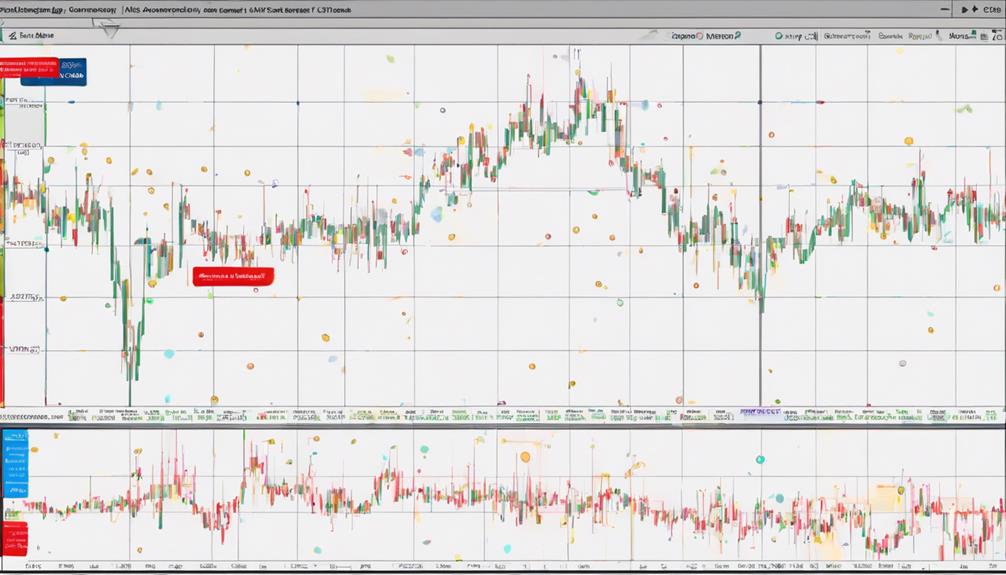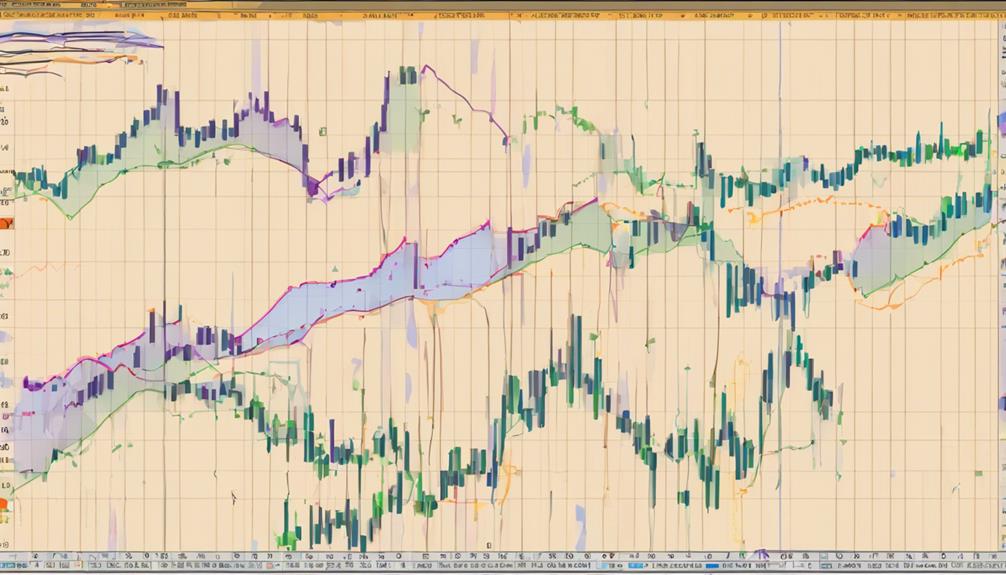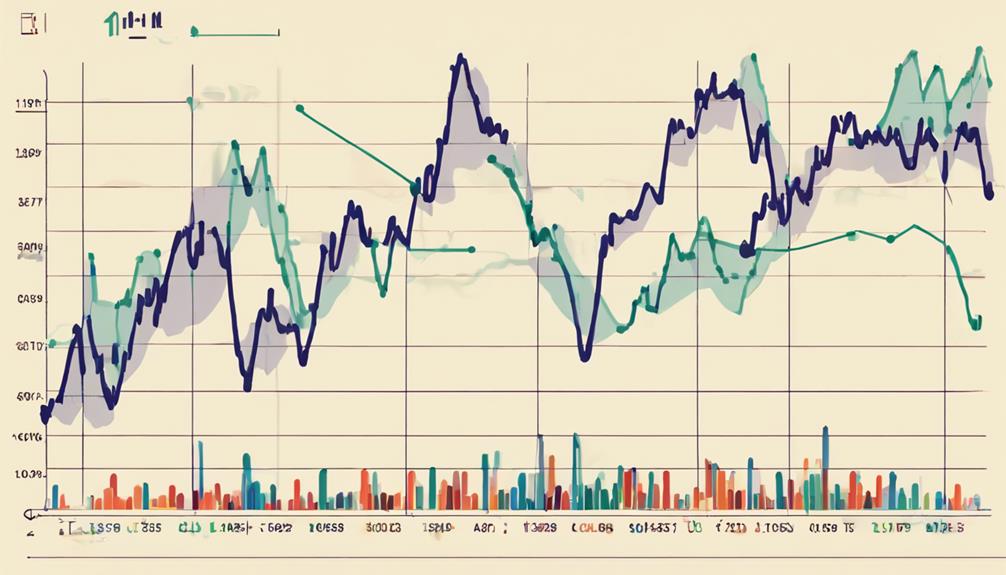The Comprehensive Step-By-Step CCI Indicator Guide offers traders a meticulous roadmap for harnessing the power of the Commodity Channel Index (CCI) in their trading endeavors.
This guide equips traders with a thorough understanding of calculating the CCI, deciphering its signals for trend analysis, and identifying crucial overbought and oversold conditions.
Moreover, it sheds light on the nuances of integrating the CCI with other indicators to refine trading strategies.
By emphasizing risk management and practical application tips, this guide serves as a valuable resource for traders seeking to elevate their trading proficiency with the CCI.
CCI Indicator Overview
The CCI Indicator serves as a crucial tool for traders seeking to analyze market momentum and identify potential overbought or oversold conditions. Developed by Donald Lambert in the 1980s, the Commodity Channel Index (CCI) is a versatile technical analysis tool widely used in financial markets.
By measuring the relationship between an asset's price and its statistical average, the CCI provides traders with valuable insights into market dynamics. The CCI oscillates around a zero line, with readings above +100 indicating potential overbought levels and readings below -100 suggesting potential oversold levels.
Traders can adjust the standard period of the CCI to align with their trading preferences and timeframes, allowing for more precise analysis. This index can be effectively utilized in various trading strategies, including trend identification, overbought/oversold conditions, and divergence signals, empowering traders to make informed decisions based on solid data.
Interpreting CCI Signals

Building on the insights gained from analyzing the CCI Indicator Overview, understanding how to interpret CCI signals is essential for traders navigating the complexities of financial markets.
CCI signals indicate overbought conditions when the indicator rises above +100 and oversold conditions when it falls below -100.
Zero line crossovers on the CCI chart suggest potential trend changes, offering traders valuable insights into market shifts.
Divergence between the price chart and CCI can signal reversals, prompting traders to exercise caution or consider adjustments to their positions.
Trendlines on the CCI chart can provide early indications of potential trendline breaks on the price chart, serving as a useful tool for trend analysis.
Spotting Overbought and Oversold Conditions

When identifying overbought and oversold conditions in trading instruments, traders look for specific CCI values to gauge potential market extremes. Overbought conditions are typically signaled when the Commodity Channel Index (CCI) value rises above 100, suggesting that the asset may be overvalued and due for a potential correction.
Conversely, oversold conditions are indicated when the CCI falls below -100, implying that the asset may be undervalued and poised for a potential rebound. Traders often consider the duration of extreme CCI levels to assess the strength of the overbought or oversold conditions.
Additionally, they may seek confirmation from other indicators such as Moving Averages, Relative Strength Index (RSI), and Average Convergence Divergence (MACD) to make more informed decisions. Understanding these overbought and oversold levels can help traders identify potential reversal points, anticipate trend changes, and determine key support and resistance levels in the market using this momentum oscillator.
Using CCI for Trend Identification

Can the Commodity Channel Index (CCI) effectively assist traders in identifying trends within the market?
The CCI is a valuable tool for trend identification as it helps in spotting potential trend changes and determining trend strength. By analyzing CCI values, traders can identify overbought and oversold conditions, which can signal the beginning or end of a trend. When divergence occurs between price movements and CCI, it may indicate a potential trend reversal. Additionally, zero line crossovers and trendlines on the CCI chart can provide early signals of upcoming trend changes, often preceding similar movements on the price chart.
Combining CCI with other technical indicators such as Simple Moving Average (SMA), Relative Strength Index (RSI), and Average Convergence Divergence (MACD) can further enhance trend confirmation and improve the accuracy of trend identification signals. By leveraging the CCI effectively, traders can make informed decisions regarding trend analysis and capitalize on profitable trading opportunities.
Enhancing CCI Effectiveness

Enhancing the effectiveness of the Commodity Channel Index (CCI) can be achieved through adjustments to its standard period, allowing for better alignment with various trading strategies. By fine-tuning the period, traders can customize CCI to suit their specific trading preferences and timeframes, enhancing its relevance in decision-making processes.
Implementing a stop-loss strategy based on CCI signals is essential for effective risk management, helping traders protect their capital in volatile market conditions. Furthermore, combining CCI with other technical indicators such as moving averages or RSI can improve signal accuracy and provide additional confirmation for trade entries and exits.
Backtesting CCI strategies is crucial to assess their profitability and reliability before live trading, ensuring that the chosen approach is robust and suitable for the selected market conditions. Adapting CCI strategies to different market dynamics and adjusting parameters accordingly can optimize the generation of buy and sell signals, enhancing overall trading performance and adaptability.
Can I Use the CCI Indicator Guide for Both Momentum and Trend-Following Trades?
The CCI for momentum trading can be used to identify overbought and oversold conditions, making it useful for both momentum and trend-following trades. By analyzing the CCI indicator, traders can make more informed decisions when seeking opportunities in the market for both trading strategies.
Frequently Asked Questions
How Do You Use a CCI Indicator?
To use a CCI indicator, traders analyze its oscillations around a zero line to identify overbought or oversold conditions. Positive values indicate potential overbought situations, while negative values suggest potential oversold scenarios, aiding in spotting trading opportunities and price trends.
What Is the Best Time Frame for a CCI Indicator?
Selecting the ideal time frame for a CCI indicator involves balancing sensitivity and reliability. Typically, 14 periods offer a good mix of accuracy and responsiveness. Traders can experiment with shorter or longer periods based on their strategy, preferences, and market conditions.
How Do You Read a CCI Index?
Reading a CCI index involves analyzing its oscillations around zero, with values above +100 indicating overbought conditions and below -100 suggesting oversold conditions. Traders watch for divergences between CCI and price movements to identify potential trend reversals.
What Is the Best Setting for the Cci?
The best setting for the CCI indicator varies based on individual trading styles and timeframes. A period of 20 is commonly used for its balance between sensitivity and reliability. Traders can experiment with shorter or longer periods for specific trading objectives.
Conclusion
In conclusion, the Comprehensive Step-By-Step CCI Indicator Guide offers traders a detailed framework for effectively utilizing the Commodity Channel Index in their trading strategies. By understanding how to calculate and interpret CCI values, identify trends, and manage risks, traders can enhance their trading performance.
For example, applying the CCI in conjunction with other technical indicators like the Moving Average Convergence Divergence (MACD) can provide a more comprehensive analysis of market conditions, leading to informed trading decisions.
